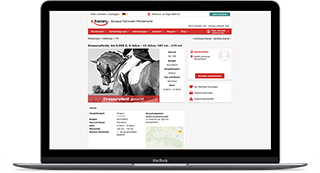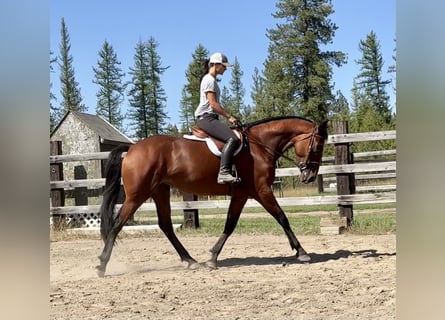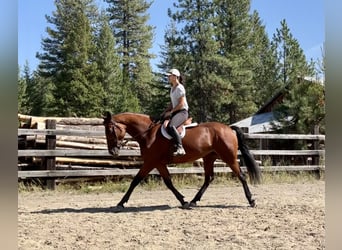Cleveland Bay - horses for sale
In addition, interested parties can directly see more information. This significantly increases the number of potential buyers.


- j Describe yourself and your wishes
- j Receive your offer directly from certified buyers
- j Immediately online, duration of 90 days
Cleveland Bay Horses for sale
The Cleveland Bay is often considered to be England’s oldest breed of horse, with it's ancestry dating back to Medieval times. These handsome horses are easily recognised, since they are bred very true to type. Powerful and upstanding, they catch the eye with their rich bay colouring and impressive presence. It’s no wonder that they have often been the first choice of aristocracy and royalty for drawing carriages and coaches. Today, their aptitude for harness work is still one of the main reasons that people are interested in a Cleveland Bay. There are no more devoted enthusiasts than the breeders who breed the Cleveland Bay, who are proud of the fascinating history of this breed.
Use and Characteristics of the Cleveland Bay
Cleveland Bays are famed for their glossy bay coats with black points (that is, black legs and a black mane and tail). Only a tiny amount of white is permissible, usually as a faint star. They do not have feather on their legs. They are large horses, generally between 16 hands (64 inches/163 cm) and 16.2 hands (66 inches/168 cm) in height, though vendors will sometimes sell a Cleveland Bay stallion that is even taller. They are “good doers”, which means they thrive on grazing that is not rich, so they are very easy to keep. This is one of the reasons that purchasers who want a large horse buy a Cleveland Bay, since they offer the benefits of size and strength without some of the disadvantages of a larger horse. Their trot is active with good flexing of the knee, but is not elevated or showy.
Origin an breeding history of Cleveland Bays
The origins of the Cleveland Bay probably lie, in part at least, in the famous religious houses of North Yorkshire in England, which were the sources of some of the finest horses until the Reformation. By late Medieval and early modern times, a type of pack horse known as the Yorkshire Chapman horse existed. The horse was particularly associated with the northern coast of Yorkshire, as far south as Whitby. This area, known as Cleveland, eventually gave its name to these powerful and distinctive bay horses. These animals were used in trade of all kinds, carrying lime, alum, coal and iron up to 600 pounds in weight. From the sixteenth century onwards, the horses of north Yorkshire were influenced by imported Barbs , Turkomans and some Andalusians , most of which were brought to the county by young men during or after their grand tours or careers overseas. Although it was always believed that the Cleveland Bay was free from the influence of both carthorses and Thoroughbreds , the breed actually did share common ancestry with the Thoroughbred through these imports. By the nineteenth century, the Cleveland Bay was a handsome all-rounder that was capable of anything, including harness work, hunting and farm work. The famed Cleveland Bays were very influential on many breeds. In the late nineteenth century, Thoroughbred input would lead to controversy when the Yorkshire Coach Horse, a lighter, showier animal for private coaching, was created by crossing Cleveland Bays with Thoroughbreds .
Cleveland Bays in Equestrianism
Cleveland Bays are now a breed in danger due to low numbers, although there are specialist breeders across the world. Buffalo Bill Cody was a huge fan of the breed, using them for stagecoach work in his shows, as well as for farm work. In the 1970s, the British Royal Family came to the rescue, when the Queen became the Patron of the breed.





